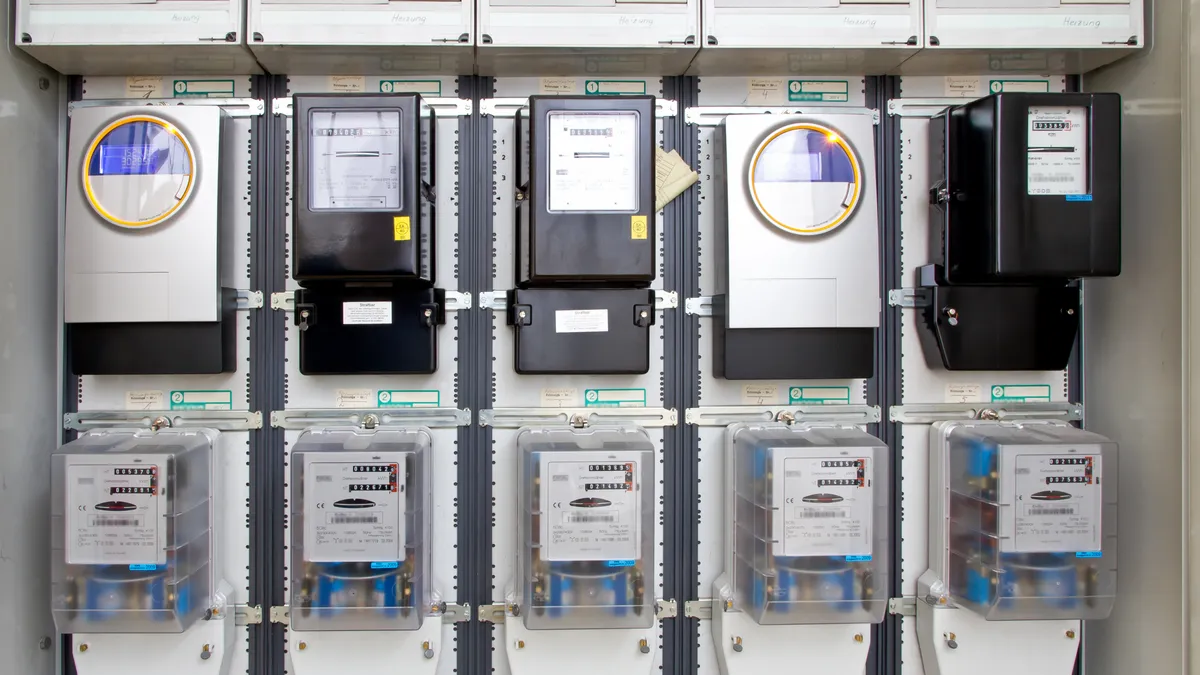Dive Brief:
- New York demand response providers have asked regulators to give them flexibility in enrolling participants and how their load reduction commitments are set, as the industry heads into the summer demand season facing uncertainty from COVID-19.
- In addition to helping optimize the electric grid, New York's demand response programs provide important revenue streams for participants and maintaining the market is important to the state's recovery once the economic shutdown passes, according to the Advanced Energy Management Alliance (AEMA), a coalition of more than a dozen providers and supporters of distributed energy resources.
- The New York Public Service Commission (PSC) has said the energy demand response sector faces "unprecedented challenges" with all non-essential businesses shuttered since March 22 by executive order of Democratic Gov. Andrew Cuomo.
Dive Insight:
The New York ISO has seen energy use decline 7% to 8% due to the economic shutdown, and the change represents not just shifting load patterns but also significant uncertainty for businesses relying on consistent electricity demand to make commitments to demand response programs.
"For planning purposes, having an accurate view of what load relief is available from customers participating in demand response is a key concern for the utilities and the New York ISO," Peter Dotson-Westphalen, senior director of market development of AEMA member company CPower Energy Management, told Utility Dive.
The PSC on April 3 requested comments from demand response providers on the impacts being experienced, potential changes to how programs are run, and "ideas that should be considered to sustain critical workforces."
AEMA filed comments April 15 recommending utilities' Dynamic Load Management (DLM) programs be updated to "allow for new enrollments to be submitted for program starts in July, August, and September in the 2020 capability period."
DLM programs currently allow only May or June program start dates (with April 1 and May 1 enrollment deadlines, respectively) as defined within the utility tariffs, and do not allow for adjustments to the resources demand response participants have committed throughout the season, Dotson-Westphalen said.
AEMA also recommended for the 2020 demand response season, which runs May to September, utility DLM programs allow for "intra-seasonal enrollment changes to the committed load relief values of all program participants on a monthly basis."
Consolidated Edison is still seeking to sign up customers, as demand response "is an important part of our strategy to ensure summer reliability," utility spokesperson Allan Drury said in an email.
"We've experienced some challenges getting customers engaged to make decisions to enroll and how much" load reduction to commit, Dotson-Westphalen said. In NYISO programs, he said if participants' load is reduced by 30% or more of their Average Coincident Load for more than 60 days, there can be a potential penalty.
At CPower, "we generally monitor that and take appropriate action to report load changes to the NYISO and adjust customers' enrollments. But now that load changes are so significant it is presenting additional challenges," he said. The company reduced its commitments for May or withheld some customer enrollments, "so we're enrolling customers that are capable of providing load relief right now."
Other recommendations from AEMA include: delaying DLM program tests until later in the capability period, preferably in July or August, and to only administer tests if performance in an actual event has not already been observed. The group also recommends utilities approve enrollments where meter communications equipment is not yet installed and operational due to COVID-19 directives.
AEMA also wants to see regulators waive a minimum 25% performance factor required to be achieved in order to be eligible to receive reservation payments. Currently, aggregators and direct program participants participating in the reservation payment program options must perform above 25% in order to receive reservation payments.
"While DR Providers will make every effort to accurately enroll customers, there needs to be recognition of the uncertainty of these times, and that customer capabilities may be less predictable than normal," AEMA told regulators in its comments.
The minimum 25% performance factor rule is typically "a perfectly reasonable rule," the group said. "But for this summer, it is appropriate to waive."
AEMA's recommendations "allow for flexibility as the economy recovers," Dotson-Westphalen said. "It will take a while for everything to come back to normal — and what that new normal is, remains to be seen."















